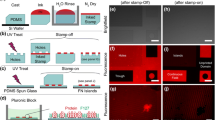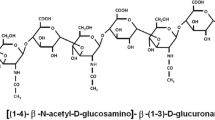Abstract
Neutrophils and macrophages express on their membrane molecules which may, in principle, interact with each other, promote specific cell to cell adhesion, affect cell function and finally, as a consequence, modulate the progression of the inflammatory process. We tested therefore if human neutrophils specifically adhere to human monocyte-derived macrophage monolayer (MDMM). Our findings show that neutrophils significantly adhere to 4-day old MDMM and that the extent of adhesion is increased by LPS-activation of MDMM. The specificity of the interaction was shown by the very low extent of adhesion of neutrophils either to freshly prepared monocyte or other types of cell monolayers and by the low percent of adhesion showed by eosinophils exposed to 7-day old MDMM. A role for β2 integrins, CD31 and PAF-receptor in the mechanism of neutrophil-MDMM interaction is suggested by specific antagonists. We suggest that the adhesion between the two cell types could lead to an increase in concentration of neutrophil- or macrophage released factors in the interaction site and in a mutual modulation of phagocyte functions.
Similar content being viewed by others
REFERENCES
PEREIRA, H. A., W. M. SHAFER, J. POHL, L. E. MARTIN, and J. K. SPITZNAGEL. 1990. CAP37, a human neutrophil-derived chemotactic factor with monocyte specific activity. J. Clin. Invest. 85:1468-1476.
TAUB, D. D., M. ANVER, J. J. OPPENHEIM, D. L. LONGO, and W. J. MURPHY. 1996. T lymphocyte recruitment by interleukin-8 (IL-8). J. Clin. Invest. 97:1931-1941.
SPRENGER, H., R. G. MEYER, A. KAUFMAN, D. BUßFELD, E. RISCHKOWSKY, and D. GEMSA. 1996. Selective induction of monocytes and not neutrophil-attracting chemochines after influenza A virus infection. J. Exp. Med. 184:1191-1196.
LEFKOWITZ, D. L., K. C. MILLS, N. MOGUILEVSKY, A. BOLLEN, A. VAZ, and S. S. LEFKOWITZ. 1993. Regulation of macrophage function by human recombinant myeloperoxidase. Immunology Letters 36:43-50.
SPESSOTTO, P., P. DRI, R. BULLA, G. ZABUCCHI, and P. PATRIARCA. 1995. Human eosinophil peroxidase enhances tumor necrosis factor and hydrogen peroxidase release by human monocytederived macrophages. Eur. J. Immunol. 25:1366-1373.
HEINZELMANN, M., M. A. MERCER-JONES, H. FLODGAARD, and F. N. MILLER. 1998. Heparinbinding protein (CAP37) is internalized in monocytes and increases LPS-induced monocyte activation. J. Immunol. 160:5530-5536.
PUENTE NAVAZO, M. D., L. DAVIE, J. SAVILL, Y. REN, L. L. K. LEUNG, and J. L. MCGREGOR. 1996. Identification of a domain (155-183) on CD36 implicated on the phagocytosis of apoptotic neutrophils. J. Biol. Chem. 271:15381-15385.
LORENZON, P., E. VECILE, E. NARDON, E. FERRERO, J. M. HARLAN, F. TEDESCO, and A. DOBRINA. 1998. Endothelial cell E-and P-selectin and vascular cell adhesion molecule-1 function as signaling receptors. J. Cell. Biol. 142:1381-1391.
HILL, M. E., I. N. BIRD, R. H. DANIELS, M. A. ELMORE, and M. J. FINNEN. 1994. Endothelial cellassociated platelet-activating factor primes neutrophils for enhanced superoxide production and arachidonic acid release during adhesion to but not transmigration across IL-1b-treated endothelial monolayers. J. Immunol. 153:3673-3683.
DEL MASCHIO, A., A. ZANETTI, M. CORADA, Y. RIVAL, L. RUCOE, M. G. LAMPUGNANI, and E. DEJANA. 1996. Polymorphonuclear leukocyte adhesion triggers the disorganization of endothelial cell-to-cell adherens junctions. J. Cell. Biol. 135:497-510.
KANSAS, G. S. 1996. Selectins and their ligand: current concepts and controversie. Blood 88:3259-3287.
SPERTINI, O., A. S. CORDEY, N. MONAI, L. GIUFFRÈ, and M. SCHAPIRA. 1995. Neutrophils, monocytes and human hematopoietic progenitor cells express a ligand for L-selectin. Blood 86:31a abs 113.
CARLOS, T. M., and J. M. HARLAN. 1994. Leukocyte-endothelium adhesion molecules. Blood 84:2068-2101.
BERNATCHEZ, S. F., M. R. ATKINSON, and P. J. PARKS. 1997. Expression of intercellular adhesion molecule-1 on macrophages in vitro as a marker of activation. Biomaterials 18:1371-1378.
NEWMAN, P. J. 1997. Perspective series: the biology of PECAM-1. J. Clin. Invest. 100:S25-S27.
CHAO, W., and M. S. OLSON. 1993. Platelet activating factor receptors and signal transduction. Biochem. J. 292:617-629.
BREVIARIO, F., F. BERTOCCHI, E. DEJANA, and F. BUSSOLINO. 1988. IL-1-induced adhesion of polymorphonuclear leukocytes to cultured human endothelial cells. Role of Platelet-Activating Factor. J. Immunol. 141:3391-3397.
MENEGAZZI, R., G. ZABUCCHI, A. KNOWLES, R. CRAMER, and P. PATRIARCA. 1992. A new one-step assay on whole cell suspension for peroxidase secretion by human neutrophils and eosinophils. J. Leukoc. Biol. 53:619-624.
MAGNARIN, M., A. KNOWLES, A. VENTURA, F. VITA, L. FANTI, and G. ZABUCCHI. 1995. A role for eosinophils in the pathogenesis of skin lesions in patients with food-sensitive atopic dermatitis. J. All. Clin. Immunol. 96:200-208.
ZABUCCHI, G., M. R. SORANZO, R. MENEGAZZI, P. BERTONCIN, E. NARDON, and P. PATRIARCA. 1989. Uptake of human eosinophil peroxidase and myeloperoxidase by cells involved in the inflammatory process. J. Histochem. Cytochem. 37:499-508.
RYAN, U. S. 1984. Culture of pulmonary endothelial cells on microcarrier beads. In: Biology of Endothelial Cells. Chapter 4. pp. 34-50. E. A. Jaffe Editor. Martinus Nijhoff Publishers, Boston, MA, USA.
BRANDLEY, B. K., S. J. SWIEDLER, and P. W. ROBBINS. 1990. Carbohydrate ligands of the LEC cell adhesion molecules. Cell 63:861-863.
PHILLIPS, M. L., E. NUDELMAN, F. C. A. GAETA, M. PEREZ, A. K. SINGHAL, S. HAKOMORI, and J. C. PAULSON. 1990. ELAM-1 mediates cell adhesion by recognition of a carbohydrate ligand, sialyl-Lex. Science 250:1130-1132.
HUMPHRIES, M. J. 1996. Integrin activation: the link between ligand binding and signal transduction. Curr. Opin. Cell Biol. 8:632-640.
GURUBHAGAVATULA, I., Y. AMRANI, D. PRATICO, F. L. RUBERG, S. M. ALBELDA, and R. A. PANETTIERI. 1998. Engagement of human PECAM-1 (CD31) on human ndothelial cells increases intracellular calcium ion concentration and stimulates prostacylin release. J. Clin. Invest. 101:212-222.
LO, S. K., A. CHEUNG, Q. ZHENG, and R. L. SILVERSTEIN. 1995. Induction of tissue factor on monocytes by adhesion to endothelial cells. J. Immunol. 154:4768-4777.
TOURNAY, C., P. J. COURTOY, L. MARODI, P. TOTTÈ, J. WERENNE, A. JACQUET, L. GARCIAQUINTANA, A. BOLLEN, and N. MOGUILEVSKY. 1996. Uptake of recombinant myeloperoxidase, free or fused to Fcg, by macrophages enhances killing activity toward micro-organisms. DNA and Cell Biol. 15:617-624.
BADLEY, A. D., D. DOCKRELL, M. SIMPSON, R. SCHUT, D. H. LINCH, P. LEIBSON, and C. V. PAYA. 1997. Macrophage-dependent apoptosis of CD4+ T lymphocytes from HIV-infected individuals is mediated by FasL and Tumor Necrosis Factor. J. Exp. Med. 185:55-64.
PERISSUTTI, S., and F. TEDESCO. 1994. Effect of cytokines on secretion of the fifth and eighth complement components by HepG2 cells. Int. J. Clin. Lab. Res. 24:45-48.
Author information
Authors and Affiliations
Rights and permissions
About this article
Cite this article
Magnarin, M., Spessotto, P., Soranzo, M.R. et al. Human Neutrophils Specifically Interact with Human Monocyte-Derived Macrophage Monolayers. Inflammation 24, 89–98 (2000). https://doi.org/10.1023/A:1006992126707
Issue Date:
DOI: https://doi.org/10.1023/A:1006992126707




